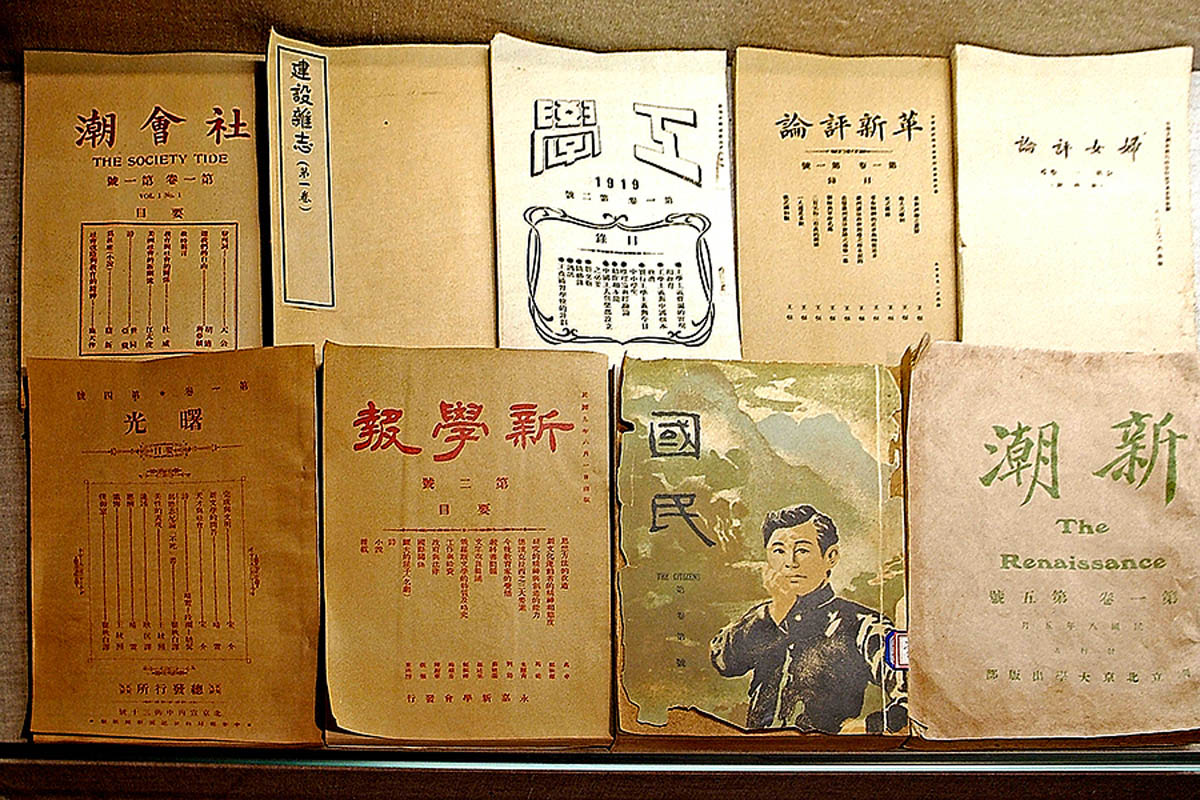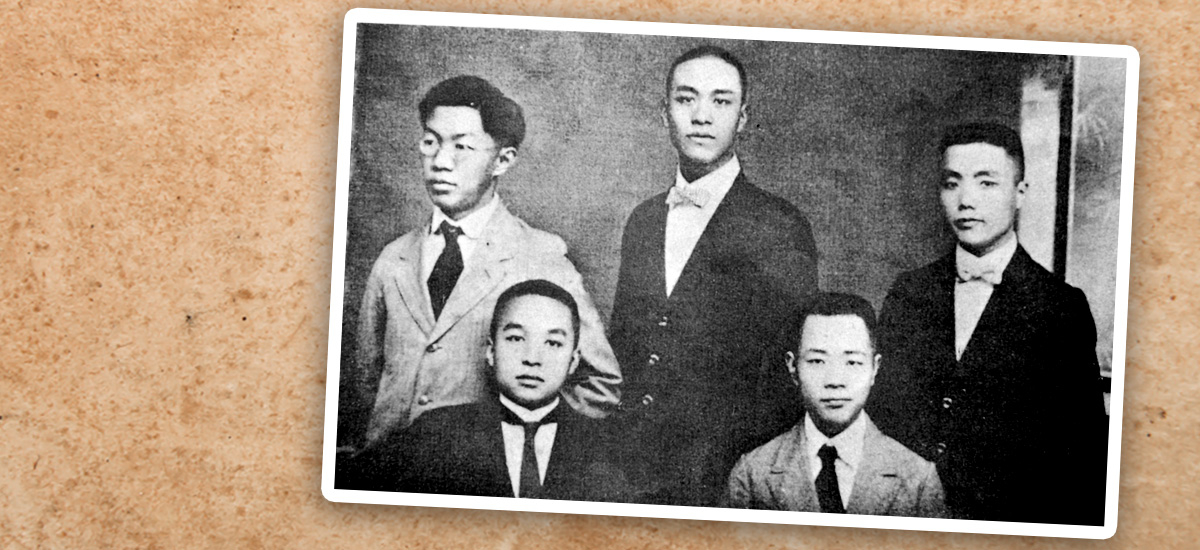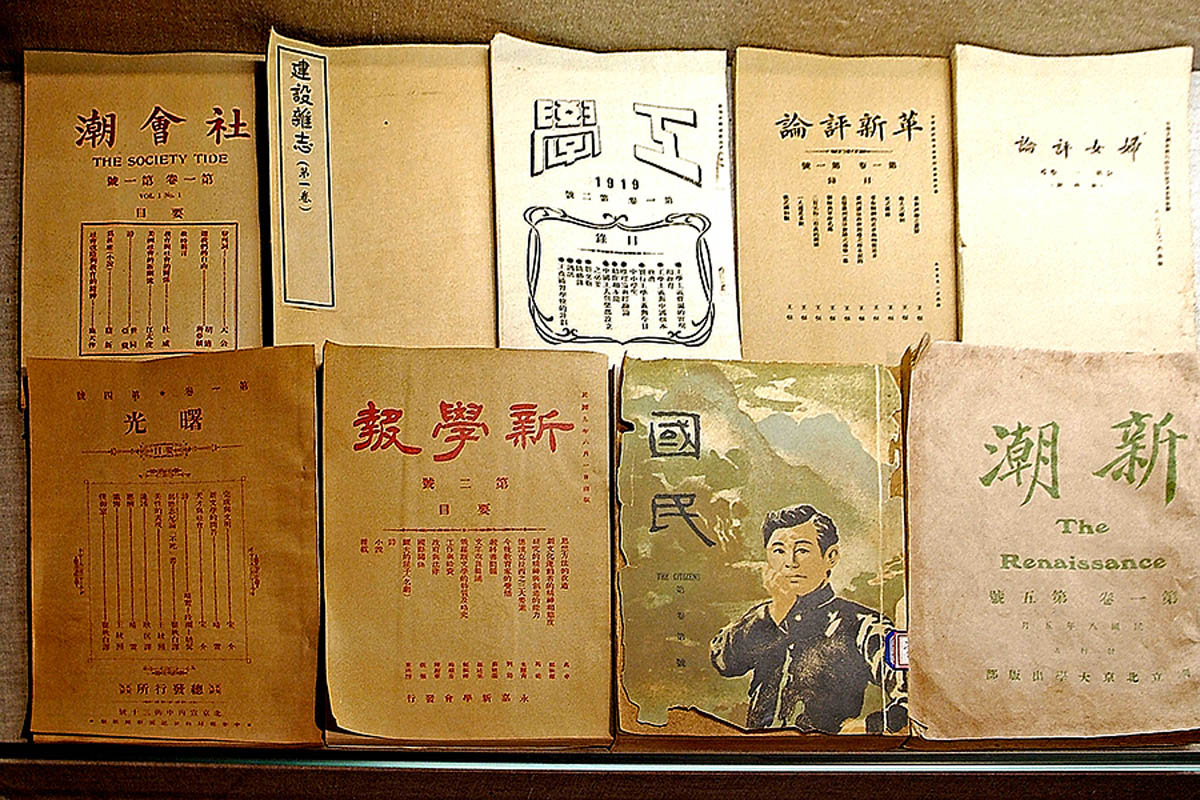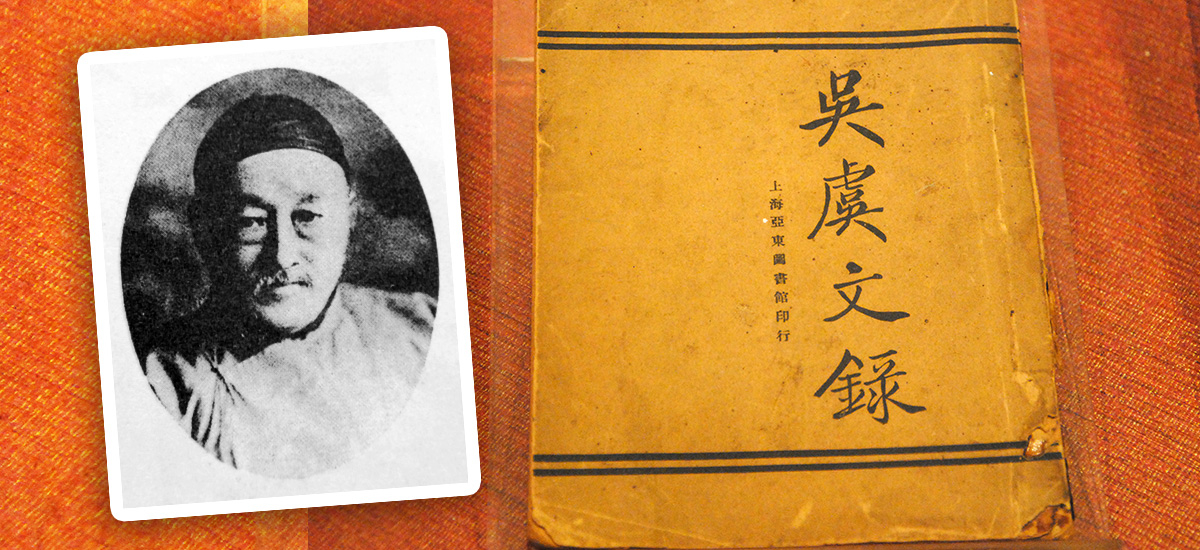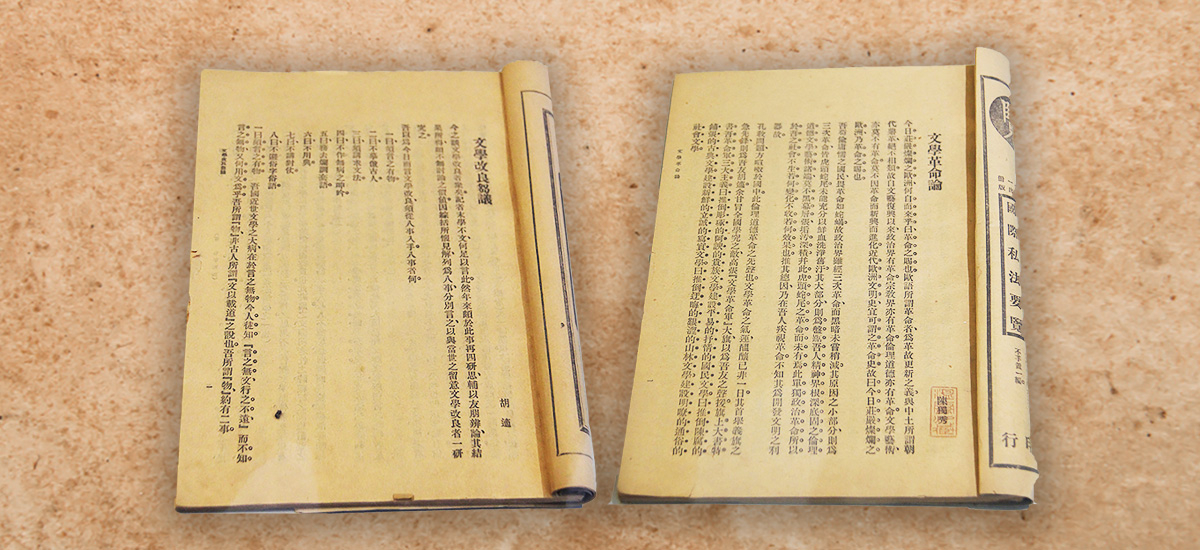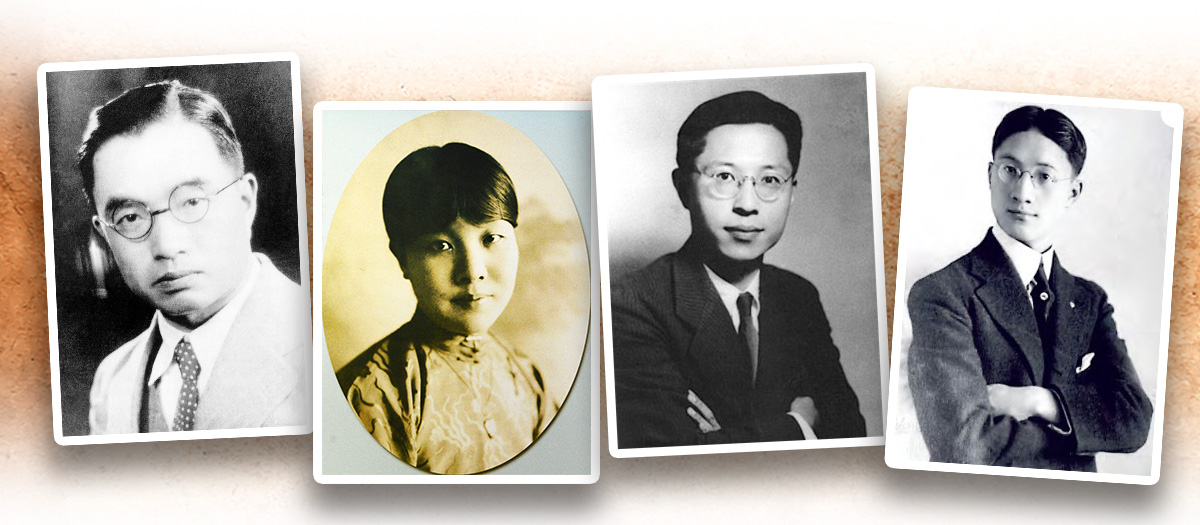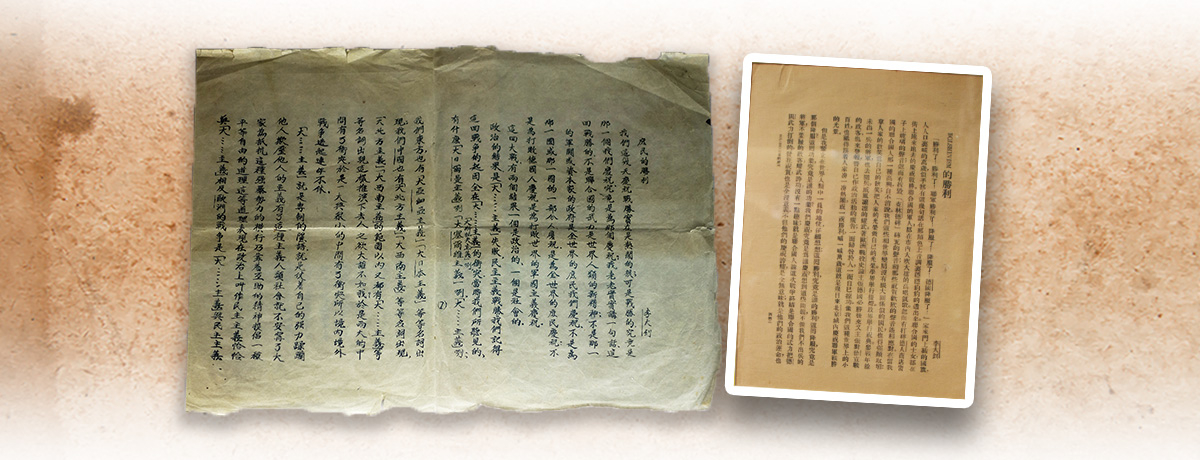The large-scale May Fourth Nationalist Movement (五四愛國運動) may have ended, but the New Culture Movement (新文化運動) had not. It was guided by the twin spirits of democracy and science, continuing its in-depth reconfiguration of China’s cultural-intellectual landscape. Hu Shi (胡適, also known as Hu Shih) published the key work A Preliminary Discussion of Literary Reform (文學改良芻議); Chen Duxiu (陳獨秀) promoted literary reform in support of the movement; Cai Yuanpei (蔡元培), the president of Peking University encouraged an academic approach of “embracing diversity and allowing all schools of thought to flourish”; Lu Xun (魯迅) authored the groundbreaking vernacular short story Diary of a Madman (狂人日記); and the students Luo Jialun (羅家倫) and Fu Sinian (傅斯年) founded the Xinchao (新潮, New Tide) journal. Following the October Revolution, Li Dazhao (李大釗) published the essays The Victory of Bolshevism (布爾什維主義的勝利) and The Victory of the People (庶民的勝利).
While some called for “total Westernization” (全盤西化), Liang Qichao (梁啟超) upheld and preserved the essence of traditional culture. Confucianism, assaulted by new age intellectuals who tuned in to the slogan “down with the Confucian School” (打倒孔家店) evolved into the New Confucian School (新儒學). It was helped by staunch supporters Liang Shuming (梁漱溟), Xiong Shili (熊十力) and Ma Yifu (馬一浮) who considered Confucianism a fine tradition that should be preserved and promoted. Later on, Hu Shi and various other scholars also devoted themselves to reorganizing the national cultural heritage while Gu Jiegang (顧頡剛) of the Doubting Antiquity School (疑古派) led a massive debate on ancient history. The situation resembled China’s Spring and Autumn (春秋) and Warring States (戰國) periods when a broad range of ideas were widely and freely discussed and debated. This was known as the Contention of a Hundred Schools of Thought (百家爭鳴).
|
|
Some claim that the New Culture Movement should be discredited for being overly radical in its slogans such as “down with the Confucian School” and “total Westernization”. Is this a fair assessment? |
|
|
See answer below. |
Under the leadership of Peking University’s President, Cai Yuanpei, the university became the hub of the May Fourth Movement and the New Culture Movement. Students became active in clubs and associations. Pictured is a group photo featuring some of the members of Peking University’s Xinchao (New Tide) Society. Luo Jialun, the first figure from the left in the back row, coined the slogan “ struggle for sovereignty externally, get rid of national traitors at home” (外爭主權,內除國賊) . He would later become the president of Tsinghua University (清華大學).
The May Fourth Movement saw a proliferation of vernacular Chinese journals that promoted a new cultural-intellectual outlook. Among them the Xinchao journal, whose editors included Luo Jialun and Fu Sinian, was particularly influential.
Wu Yu (吳虞) and the Collection of Wu Yu’s Writings (吳虞文錄) that he authored. Once a teacher at Peking University, Wu Yu published articles in the New Youth journal that critiqued established tenets of decency and propriety (禮教), as well as Confucian teachings. Hu Shi, who wrote the preface for Collection of Wu Yu’s Writings, coined the term “smash the Confucian School” which later evolved into the May Fourth Movement’s widely used slogan “down with the Confucian School”.
Hu Shi and Chen Duxiu published the articles A Preliminary Discussion of Literary Reform ( 文學改良芻議) and Theories of Literary Revolution (文學革命論) respectively. The tide of literary revolution unleashed a movement for the use of vernacular Chinese, and brought forth various new vernacular works that would dazzle the literary scene.
Written vernacular Chinese is also known as baihua (白話) Chinese. During the early Republican period, intellectuals like Chen Duxiu and Hu Shi considered classical Chinese an inadequate means of expression that in turn discouraged literacy and impeded social progress. In place of classical Chinese, they advocated a “write what you say” ( 我手寫我口), more colloquial writing style. This began the Vernacular Chinese Movement, which quickly gathered momentum, thanks to the anti-tradition, pro-reform trend sweeping through the nation in the aftermath of the May Fourth Movement. Soon, vernacular Chinese usurped the role of classical Chinese.
Vernacular novels during the May Fourth period were able to connect with readers as never before. Diary of a Madman, published by Lu Xun in 1918 and The True Story of Ah Q (阿Q正傳) that he wrote between 1921 and 1922 both caused a sensation in China when they were published and have remained influential to this day. Pictured is the scene where the traditional tenets of decency and propriety reveal their “cannibalistic” nature in the play Diary of a Madman performed in 2011 at the Beijing Fringe Theatre International. Pictured is a poster promoting the 1958 film adaptation of The True Story of Ah Q.
Diary of a Madman was a scathing critique of China’s traditional tenets of decency and propriety as was The True Story of Ah Q of the negative traits of the Chinese people. They spawned a host of films and TV dramas as well as play adaptations and academic studies. “Ah Q mentality” has become a commonly used Chinese term. It refers to the main character Ah Q’s penchant for consoling himself through imagining each defeat to be a “spiritual victory”.
In addition to novels, other forms of writing also thrived with their adoption of vernacular Chinese, launching numerous outstanding authors to prominence. Examples are (from left) Zhu Ziqing (朱自清), Bing Xin (冰心), Cao Yu (曹禺) and Xu Zhimo (徐志摩) pictured above. Their literary output in various genres including essays, children’s literature, drama and modern poetry received critical acclaim and many works are still used as course materials in schools.
Young “new women” during the May Fourth period and volume 1, issue 4 of the journal Women's Review (婦女評論) published in 1920. The movement for women’s emancipation rose along with the May Fourth Movement. Many “new women”, especially young women, took to wearing short tunics with wide sleeves, sporting short hairstyles and socializing with a wider community. Publications that advocated women’s rights also gained significant readership.
The skepticism towards tradition that characterized the May Fourth and New Culture Movements also left its mark on the study of history, with the newly-emerged Doubting Antiquity School setting off a massive debate on the authenticity of ancient history. The pictures show Gu Jiegang, a representative figure of the Doubting Antiquity School, and the work Debates on Ancient History (古史辨) that he helped edit.
Despite the anti-Confucian trend, there were those who objected to total Westernization and the wholesale rejection of their own culture, and strove to carry on and promote the positive aspects of Confucianism. Pictured are (from left) Liang Shuming, Xiong Shili and Ma Yifu, representative figures of New Confucianism. The trio was hailed as the “Three Sages of New Confucianism” (新儒學三聖人).
Li Dazhao wrote The Victory of the People and The Victory of Bolshevism, essays that sought to promote the October Revolution in Russia. Following the May Fourth Movement, Chinese intellectuals realized the importance of social power and the need for an alliance between workers and peasants. Many turned to Marxism for an alternate ideology, which had profound implications.
|
|
Some claim that the New Culture Movement should be discredited for being overly radical in its slogans such as “down with the Confucian School” and “total Westernization”. Is this a fair assessment? |
|
|
Throughout history, every major movement and trend takes place against a particular background and pursues its own inevitable course, and thus cannot be either casually dismissed or approved. We must identify the main current of each event and its general direction in order to examine it objectively. The New Culture Movement emerged in the early years of the Republic, a time when many still harbored hopes for and worked towards the revival of the monarchy. Inevitably those disappointed by these developments laid the blame on traditional culture. Loyalty to one’s liege lord, a virtue extolled by Confucianism, had been exploited by rulers for thousands of years, and the Confucian tenets of the Three Obedience and Four Virtues (三從四德) had long fettered Chinese society. When Yuan Shikai (袁世凱) declared himself emperor and when Zhang Xun (張勳) attempted to restore the Qing dynasty, both professed their respect for Confucianism. Naturally this made it the scapegoat for public ire. In a desperate attempt to overcome China’s deep-rooted traditions, some new age intellectuals proposed total Westernization as the fastest way to change China. However, as traditional culture is the basis of ethnic identity, efforts to eradicate Confucianism and promote total Westernization were overly extreme. This led to unintended side effects which are now regarded as a blemish on the social movement. Nevertheless, the main current of the movement remained the advocacy of democracy and science, which have both been essential in driving social progress up to this day, but were in short supply back then. For this reason, the overall achievements of the New Culture Movement must not be taken lightly. |
Source of most photos used in this feature piece: Visual China Group (pictures 1, 5, 6), Fotoe (pictures 2, 3, 4, 5, 7 and 10), misc. photo sources.




